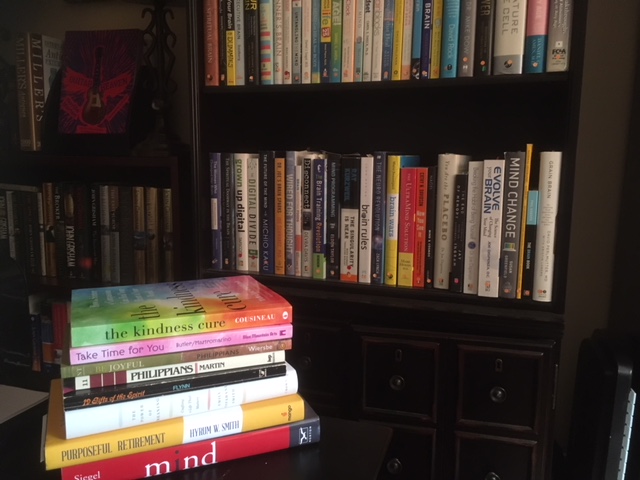Not only did I buy a Kindle for e-books, I downloaded the app for my PC, iPad, iPhone and android. I thought for sure we were heading for a world of digital when it came to books, magazines and newspapers.
I didn’t like the idea since I loved my hardcover books that I revisited frequently whenever I wrote an article, newsletter, report or book. I found it so easy to highlight passages, scribble notes in the margins – mainly ideas generated by the author’s remarks – and I used print books as references for the 20 odd e-books I authored for Bookboon.com.
But I didn’t want to be left behind in the oncoming digital age of speed. I was committed to at least keep my brain up to date even while my aging body advertised otherwise.
So I have hundreds of e-books on my various devices, which I still refer to when I travel – and in waiting rooms, airports and buses. Many of them, however, are simply duplicates of the print books I’m reading at the time.
You can imagine my surprise and sheer joy when I started reading reports of the recent decline in electronic book sales, and in spite of all the bookstore closures, print book sales had stopped declining.
I noticed it first in an Inc. article written by Glenn Leibowitz titled “7 reasons why e-book sales are falling – and print book sales are rising again.” According to the Wall Street Journal, sales of traditional print books rose by 5% in the U.S. the previous year, while sales of e-books plunged by 17%.
Another article posted by Dave Schumacher on June 20, 2017 reported that during the first nine months of 2016, e-book sales in the US declined by a dramatic 18.7% compared to the same period in 2015. Dollar sales fell to about $877 million while print books grew slightly to more than $1.6 billion.
Publishers weekly showed that hardcover print unit sales had held steady over the past five years while e-books declined – and that hardcover books outsold e-books in 2016 for the first time since 2011.
Of course an actual trend is not yet conclusive. One writer mentioned the popular adult colouring books that can’t be replicated in digital format, for example.
And what about the young people? Are they firmly committed to e-books – especially with their use by schools, and their ease of access and low cost? Well, I found a student report that surveyed other college students using SurveyMonkey. The sample size was only 300, but half the respondents said they buy in both formats, and a surprising 40% said they prefer reading print books.
Like me they like the convenience of having 1000 books at their fingertips. But also like me, they made remarks such as “I spend enough time on computers; I need a break; I like the feel of the pages” and so on.
Of course, as mentioned in last week’s blog, there are plenty of other advantages of the good old-fashioned, reliable, durable print books as well.
I don’t think e-books will keep declining. But neither will print books. Rather than one format taking over a bigger share of the market, I feel the two formats will both share in a bigger market as more people discover the joy – and wisdom – of reading.
At least I like to think so.


Recent Comments